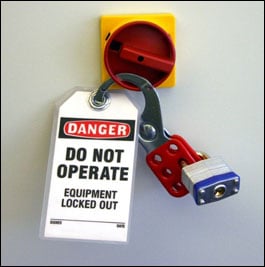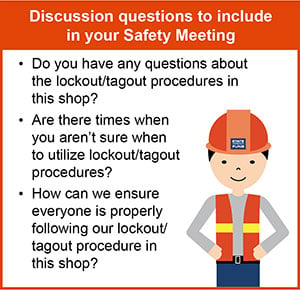A manufacturing shop employee notices a piece of cardboard jammed inside a conveyor belt. The first instinct was to remove it and continue the work, so the employee grabbed the cardboard and tried to pull it out, while the conveyor was still moving. The employee’s arm got caught up in the machinery, resulting in a catastrophic injury that changed her life forever.
By following proper lockout/tagout procedures, this employee would not have reached for the cardboard herself. Instead, she would have followed specific instructions resulting in an authorized repair person performing the task, with the machine shut off and taken out of service until it’s ready to be used again. In this case, however, the injured worker had not received lockout/tagout training.
What your employees need to know
Under the lockout/tagout regulations, only authorized employees—who possess the appropriate level of knowledge and training—are allowed to perform maintenance on the equipment. Those that operate the equipment, affected employees, may not perform maintenance but are allowed to shut the machine down and place a tag on it to warn coworkers that the equipment should not be used.
Tagging the equipment is an important step, because if coworkers don’t know why a conveyor belt or other piece of heavy machinery was shut down, there’s a risk one of them might start it back up not knowing there’s a problem or that someone’s performing maintenance.

